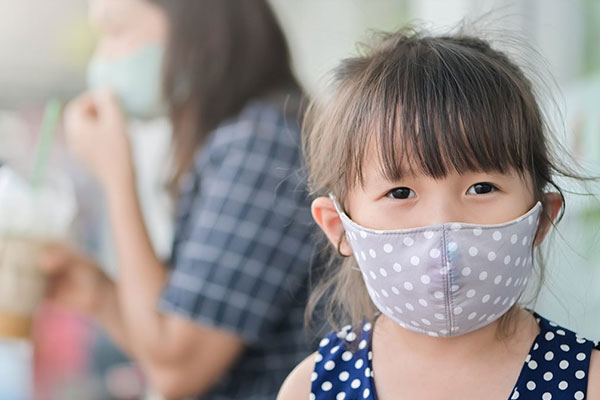Flu pandemic

Pandemic Flu & Seasonal Flu
A flu pandemic is a global epidemic caused by a new virus to which there is little or no pre-existing immunity in the human population, which allows the virus to spread easily from person to person worldwide. Influenza pandemics are impossible to predict; and they may be mild, or cause severe disease or death. Severe disease may occur in certain risk groups, which may correspond to those at risk of severe disease due to seasonal influenza. When a pandemic influenza virus emerges, the virus can spread quickly because most people will not be immune and a vaccine might not be widely available to offer immediate protection.
What causes for pandemic flu?
The main three types of influenza virus that cause illness in people are named A, B, and C. Influenza A and B viruses cause seasonal epidemics of disease almost every winter in Western countries, while influenza C causes only mild respiratory symptoms and is not thought to cause epidemics, according to the CDC. The influenza A virus is broken down into subtypes, and both A and B are broken down into strains for classification.
★ Seasonal Flu
Seasonal Flu is a contagious respiratory illness caused by flu A and flu B viruses that infect the human respiratory tract. Annual flu epidemics occur among people worldwide.
There are three types of seasonal influenza viruses that cause illness in humans: Type A, B, and C, based on their protein composition. Public health experts are most concerned with type A. Type A viruses are subdivided into groups based on two surface proteins: hemagglutinin (HA) and neuraminidase (NA), which are represented as H1 through H16 and N1 through N9.
★ Avian influenza
Avian influenza is caused by those influenza viruses that mainly affect birds and poultry, such as chickens or ducks. These viruses are distinct seasonal flu and are not easily transmitted to humans. However, some of these animal viruses may occasionally infect humans. These are known as novel influenza viruses (H5N1) and avian influenza viruses are one example.
|
Pandemic Flu
|
Seasonal Flu |
Avian influenza | |
| How often does it happen? |
Rarely happens (three times in 20th century) |
Happens annually and usually peaks between December and February | Refers to the disease caused nu infection with avian (bird) influenza |
|
Mode of transmission |
Pandemic flu viruses would spread in the same way as seasonal flu, but a pandemic flu virus will likely infect more people because few people have immunity to the pandemic flu virus. | Flu viruses are thought to spread mainly from person to person through droplets made when someone with flu coughs, sneezes, or talk near a person. | People mainly become infected with avian influenza virus through contact with infected birds and poultry (live or dead) or their droppings, or contact with contaminated environments |
| Incubation period | Within one week | 1 to 4 days | Around 7-10 days depending on the specific subtypes of avian influenza A viruses |
| Who is at risk for complications from viruses? | In some past pandemics, healthy young adults were high risk for developing severe flu complications. | Young children, people 65 years and older, pregnant women, and people with certain long-term medical conditions are more likely to have serious flu complications. | People in close contact with live poultry are more susceptible to contracting avian influenza. The elderly, children and people with chronic illness have a higher risk of developing complications such as bronchitis and chest infection. |
What steps can I take to avoid getting the avian influenza?
Infected birds and poultry (live or dead) or their droppings may carry avian influenza virus. Therefore, members of the public should avoid touching poultry, birds, animals or their droppings, and pay attention to the following issues to prevent avian influenza:
- Caution with animals
- Washing hands after handling animals or contaminated items
- Being careful when handling ducks, geese and other wild game birds
- Practice good personal hygiene
- The most important step you can take to reduce the chance of infection is to wash your hands regularly, keeping your hands away from your face, keeping common surface areas clean and disinfected.
- Build up good body immunity by having a balanced diet, regular exercise and adequate rest, do not smoke and avoid alcohol consumption.
- Take for personal hygiene are listed in good hygiene practices – reducing the spread of infections and viruses
How to stopping the spread of pandemic flu?
- Avoid close contact with others if you are unwell with flu
Keeping your distance from others by standing or sitting back will help reduce the chances of spreading the flu virus between people.
- Cleaning and disinfecting
Flu viruses can live on surfaces for several hours. You should regularly clean surfaces such as tables, fridge doors and door knobs with soap and water or detergent.
- Avoid public gatherings, and cancel large events
- Stay home from work or school if you become ill with the flu
How to stopping the spread of seasonal flu?
- Practice good hygiene ,such as hand-washing and covering sneezes and coughs
- Clean frequently touched surfaces and objects
Regularly clean and disinfect frequently touched surfaces such as furniture, toys, and commonly shared item with 1:99 diluted household blench
- Vaccines for seasonal flu
Flu vaccinations are a safe and effective way to ward off seasonal flu. The flu shot helps that body fight off seasonal flu, so it helps keep a person from getting sick if he or she comes into contact with seasonal flu shots.
*The above information is for reference only, please consult your doctor for detail.

 3405 8288
3405 8288
